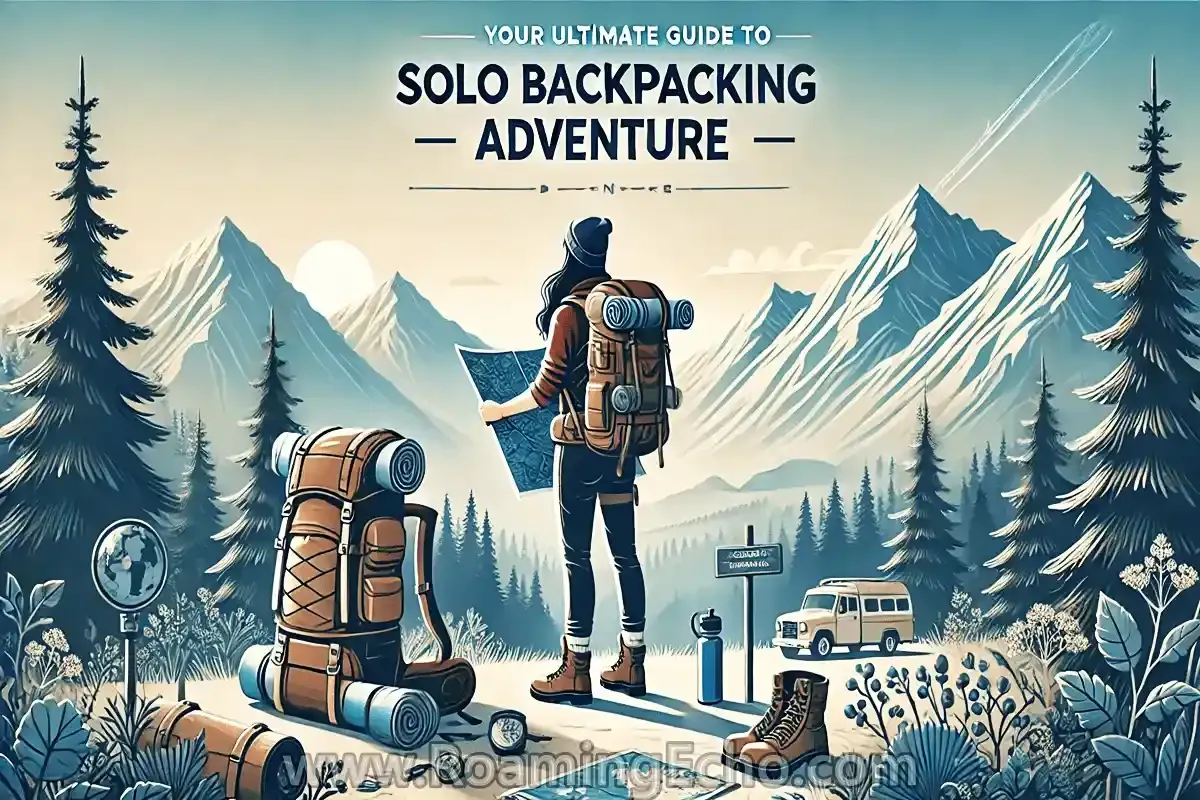Planning a Solo Backpacking Trip
Embarking on a solo backpacking adventure can be an incredibly rewarding experience, offering freedom, self-discovery, and the thrill of exploration. However, careful planning is essential to ensure a safe and enjoyable journey. This guide will provide you with step-by-step instructions, essential tips, and practical insights to help you plan the ultimate solo backpacking trip. Whether you’re a first-time traveler or a seasoned explorer, following these guidelines can make your solo adventure a success.
1. Choose Your Destination Wisely
- Research destinations that are known for being safe, backpacker-friendly, and affordable. Popular solo backpacking destinations include Southeast Asia, parts of South America, and various regions across Europe.
- Consider the ease of navigation, language barriers, and the availability of resources like accommodation, transport, and healthcare.
- Look for areas with a strong backpacker culture, as these places often offer networks, travel tips, and resources specifically for solo travelers.
2. Set a Realistic Budget
- Estimate your daily expenses, including accommodation, food, transportation, and activities. Remember to account for extra costs like travel insurance, emergency funds, and travel gear.
- Look up the average cost of living in your destination and set daily and weekly spending limits.
- To stretch your budget, consider hostels, budget hotels, and local dining options. Many solo backpackers also use platforms like Couchsurfing for free accommodation.
When Choosing Accommodation: “Finding the right hostel is key to a memorable solo trip. Our guide on How to Find the Best Hostels for Solo Travelers covers everything you need to know.”
3. Plan Your Itinerary with Flexibility
- Outline a rough itinerary that includes key cities, landmarks, and activities you want to experience. However, leave room for flexibility, as spontaneous opportunities often arise during travel.
- Research transportation options between locations; buses and trains are often more budget-friendly and accessible for solo backpackers.
- Consider joining local tours or group activities to meet fellow travelers and gain insights into the region from local guides.
4. Pack Light and Smart
- Choose a high-quality backpack that fits comfortably and is suitable for long-term use. Opt for one that has compartments to help you organize your gear.
- Pack versatile clothing suitable for various weather conditions. Essentials include a rain jacket, comfortable shoes, and quick-dry clothing. Check out our Ultimate Guide to Packing for Different Climates for tips on what to bring.
- Don’t forget essentials like a first-aid kit, power bank, water bottle, and personal identification. Lightweight packing not only makes travel easier but also allows you to be more agile and ready for spontaneous adventures.
5. Prioritize Safety
- Let friends or family know your itinerary and check in regularly, especially if you’re visiting remote areas.
- Use apps like Google Maps offline, Maps.me, or GPS devices to stay oriented and avoid getting lost.
- Avoid risky areas and be cautious with your belongings in crowded places. Consider investing in a secure travel pouch for valuables.
6. Stay Connected with Travel Apps
- Download helpful travel apps for accommodation, currency exchange, language translation, and local information. Apps like Hostelworld, XE Currency, and Google Translate can make your travel experience much smoother.
- Use social platforms and forums like Reddit, Couchsurfing, and Facebook travel groups to find travel advice, meet other travelers, or seek local recommendations.
7. Choose Accommodation Wisely
- Hostels are popular among solo backpackers due to their affordability and social atmosphere, which makes meeting other travelers easier.
- Look for accommodations that have good reviews for safety and cleanliness. Many booking platforms include specific ratings for these factors, which can be valuable for solo travelers.
- Some travelers opt for private rooms in hostels for a bit more privacy while still enjoying the community benefits of staying in a hostel.
8. Prepare Mentally for Solo Travel
- Solo travel can be empowering, but it also presents challenges. Prepare mentally by understanding that there may be times when you feel lonely or unsure.
- Develop a positive mindset and stay open to meeting new people and trying new experiences.
- Practicing mindfulness can help you adapt to new environments, manage stress, and fully enjoy your journey.
9. Document Your Journey
- Keep a travel journal, take photos, or start a blog to document your experiences. This can serve as a meaningful keepsake and may also be helpful for fellow travelers seeking inspiration.
- Share your travel stories on social media or in online travel communities. It’s a great way to stay connected with loved ones and meet others with similar travel goals.
10. Learn Basic Phrases of the Local Language
- Learning a few basic phrases like “Hello,” “Thank you,” and “Do you speak English?” can be incredibly helpful and shows respect for local cultures.
- Language basics can also help you navigate local markets, transportation, and make local friends, enhancing your travel experience.
Related Articles:
- Travel Safety Tips: How to Protect Yourself Abroad
- How to Travel the World on a Shoestring Budget: Expert Tips
- 10 Essential Travel Tips for First-Time BackpackersConclusion
Planning a solo backpacking adventure involves careful consideration and a spirit of adventure. From choosing the right destination to budgeting and prioritizing safety, each step plays a crucial role in ensuring a fulfilling journey. With thoughtful preparation and an open mind, solo backpacking can be one of the most empowering experiences of your life. Get ready, pack light, and enjoy every moment of your solo adventure!







0 Comments